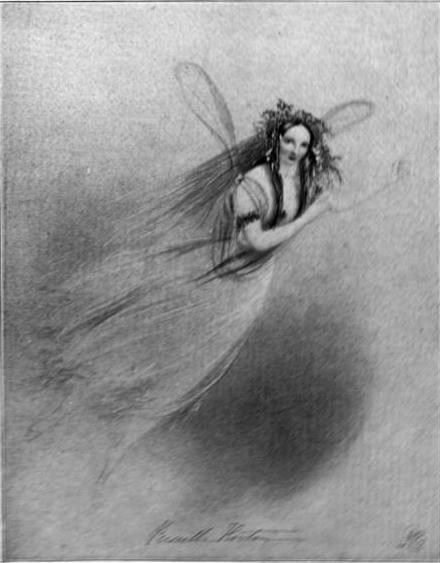..
 |
Alchemy and Literature
As alchemy in the West derived from Paracelsus, alchemists and related movements, such as Rosicrucianism, continued to speak of sylphs in their hermetic literature.
The first mainstream western discussion of sylphs comes with Alexander Pope. In Rape of the Lock, Pope satirizes French Rosicrucian and alchemical writings when he invents a theory to explain the sylph. In a parody of heroic poetry and the "dark" and "mysterious" literature of pseudo-science, and in particular the sometimes esoterically Classical heroic poetry of the 18th century in England and France, Pope pretends to have a new alchemy, in which the sylph is the mystically, chemically condensed humors of peevish women. In Pope's poem, women who are full of spleen and vanity turn into sylphs when they die because their spirits are too full of dark vapors to ascend to the skies. Belinda, the heroine of Pope's poem, is attended by a small army of sylphs, who foster her vanity and guard her beauty. This is a parody of Paracelsus, inasmuch as Pope imitates the earnest pseudo-science of alchemy to explain the seriousness with which vain women approach the dressing room. In a slight parody of the divine battle in John Milton's Paradise Lost, when the Baron of the poem attempts to cut a lock of Belinda's hair, the sylphs interpose their airy bodies between the blades of the scissors (to no effect whatsoever). The chief sylph in "The Rape of the Lock" has the same name as Prospero's servant in Shakespeare's The Tempest: Ariel.
Fairy Link
Because of their association with the ballet La Sylphide,
where sylphs are identified with fairies and the medieval legends of fairyland,
as well as a confusion with other "airy spirits" (e.g. in William Shakespeare's
A
Midsummer Night's Dream), a slender girl may be referred to as a "sylph".

Reed Ariel
"Sylph" has passed into general language as a term for minor spirits, elementals, or faeries of the air. Fantasy authors will sometimes employ sylphs in their fiction. Sylphs could create giant artistic clouds in the skies with their airy wings.
References:
- John Grant and John Clute, The Encyclopedia of Fantasy, "Elemental" p 313-4, ISBN 0-312-19869-8



